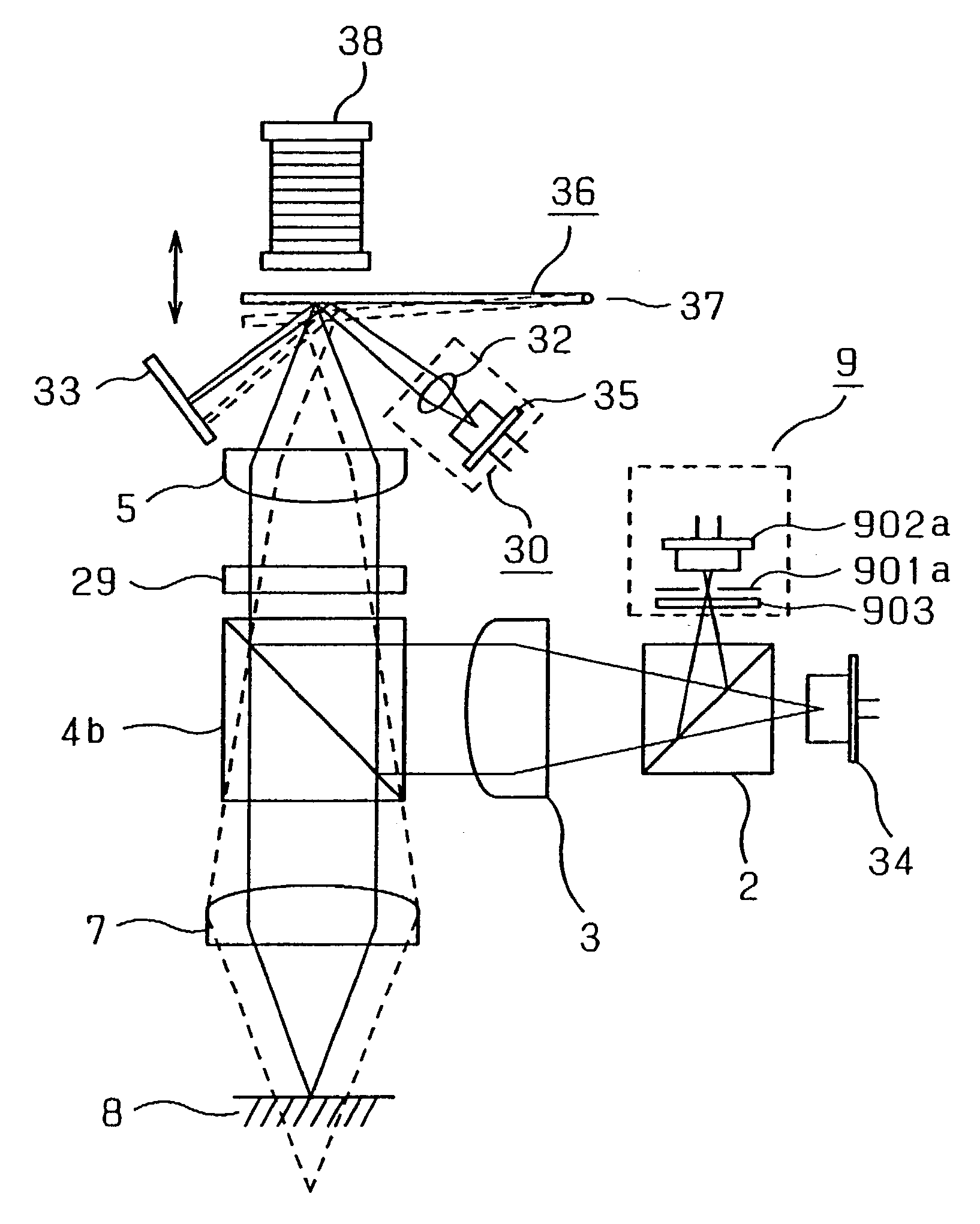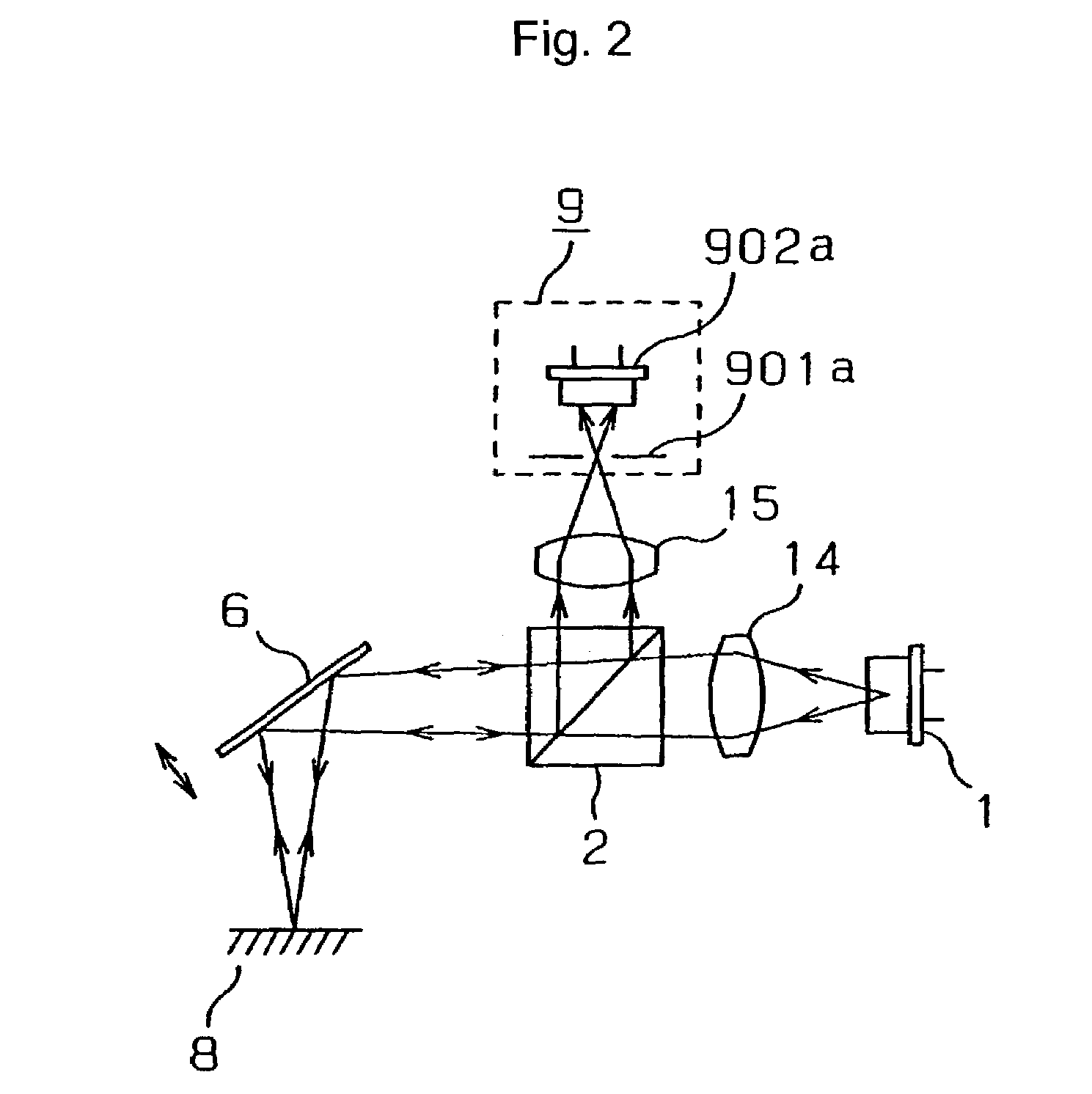Displacement sensor
a sensor and displacement technology, applied in the field of displacement sensors, can solve the problems of positional change, measurement object irregularities in reflection intensity, and inability to maintain the size of the light spot, and achieve the effect of improving the resolution of the position detection element and simple structur
- Summary
- Abstract
- Description
- Claims
- Application Information
AI Technical Summary
Benefits of technology
Problems solved by technology
Method used
Image
Examples
Embodiment Construction
[0130]Referring to attached Figures, the following description will discuss embodiments of a displacement sensor of the present invention in detail.
[0131]FIG. 31 shows a layout of an optical system of the present displacement sensor. The optical system of the present sensor is provided with a red semiconductor laser 34 serving as a light projecting unit, a cube half mirror 2 serving as “a first light-path control element”, a lens 3 commonly serves as a collimate lens and a light-receiving lens, an intermediate lens 5, an objective lens 7 serving as “a third light-converging element”, a polarizing beam splitter 4b serving as “a second light-path control element”, a ¼-wavelength plate 29 with respect to the wavelength of light released by the red semiconductor laser 34, a cantilever beam 36 and an electromagnet 38 serving as a light-path length sweeping mechanism, a pinhole 901a serving as a light-shielding mask of a light-receiving unit, a photodiode 902a serving as a light-receiving...
PUM
 Login to View More
Login to View More Abstract
Description
Claims
Application Information
 Login to View More
Login to View More - R&D
- Intellectual Property
- Life Sciences
- Materials
- Tech Scout
- Unparalleled Data Quality
- Higher Quality Content
- 60% Fewer Hallucinations
Browse by: Latest US Patents, China's latest patents, Technical Efficacy Thesaurus, Application Domain, Technology Topic, Popular Technical Reports.
© 2025 PatSnap. All rights reserved.Legal|Privacy policy|Modern Slavery Act Transparency Statement|Sitemap|About US| Contact US: help@patsnap.com



